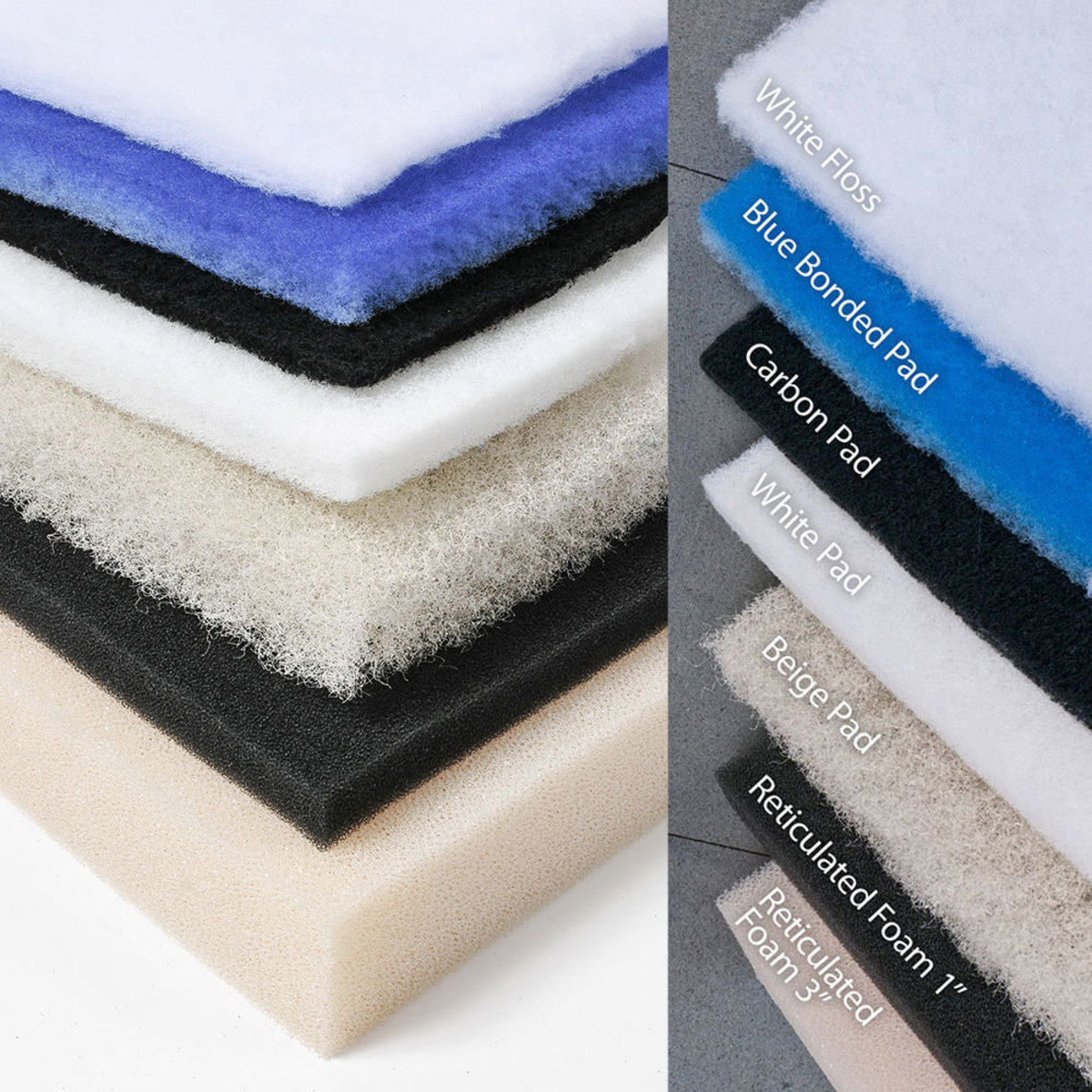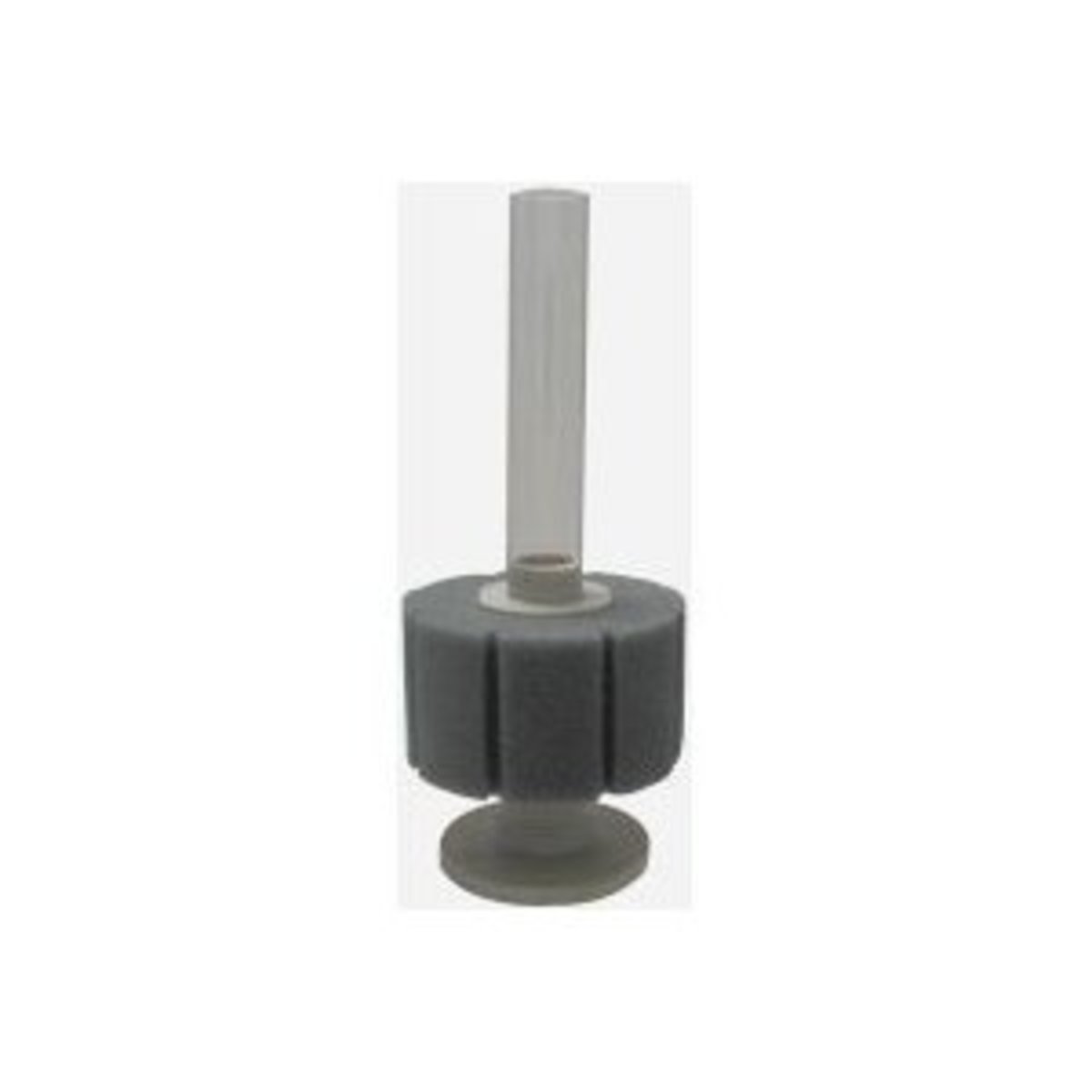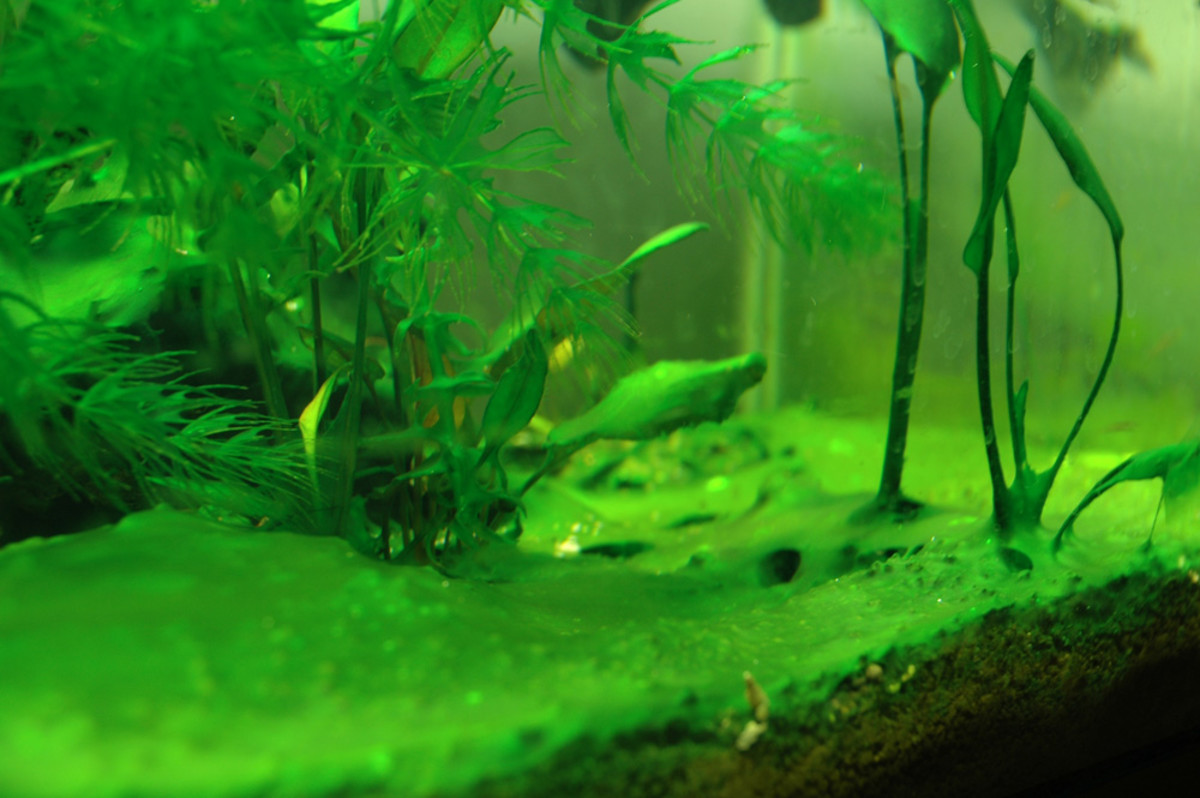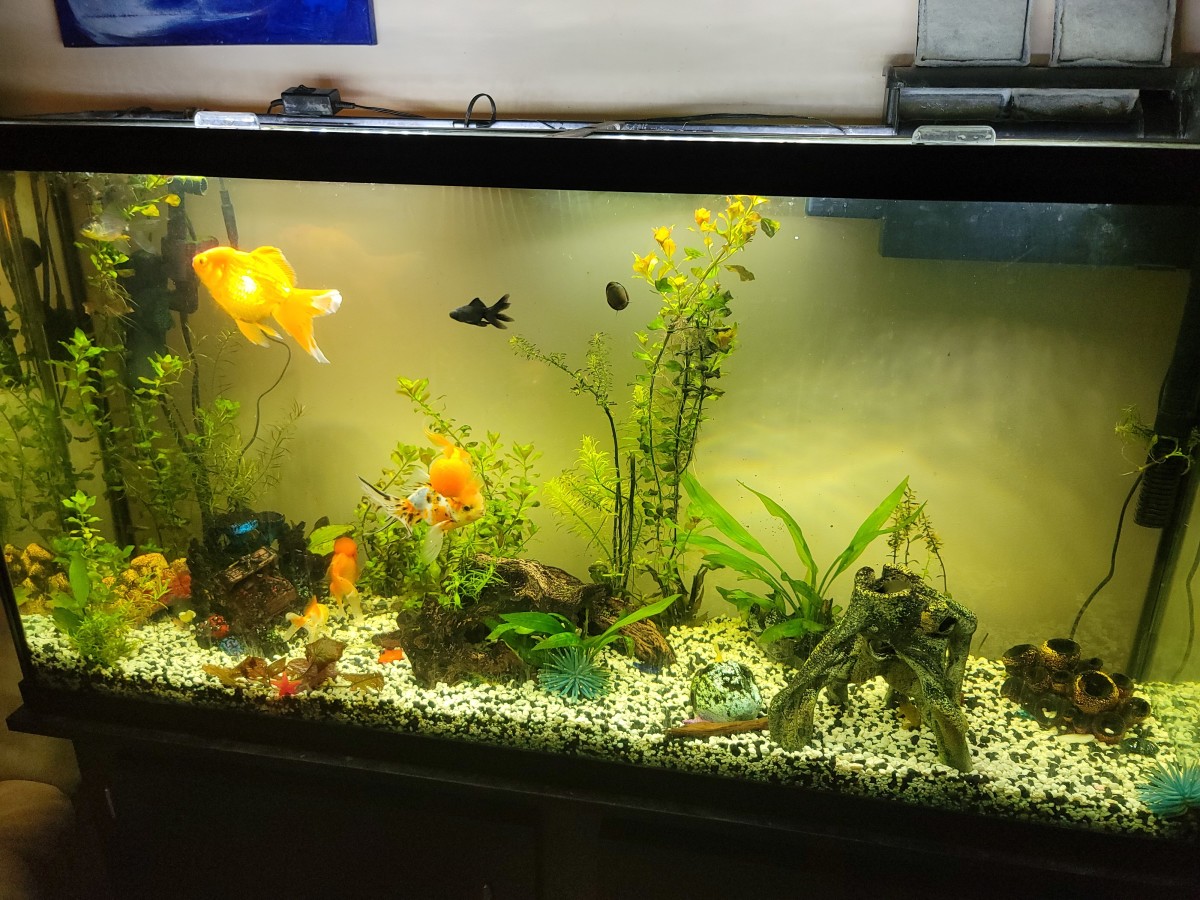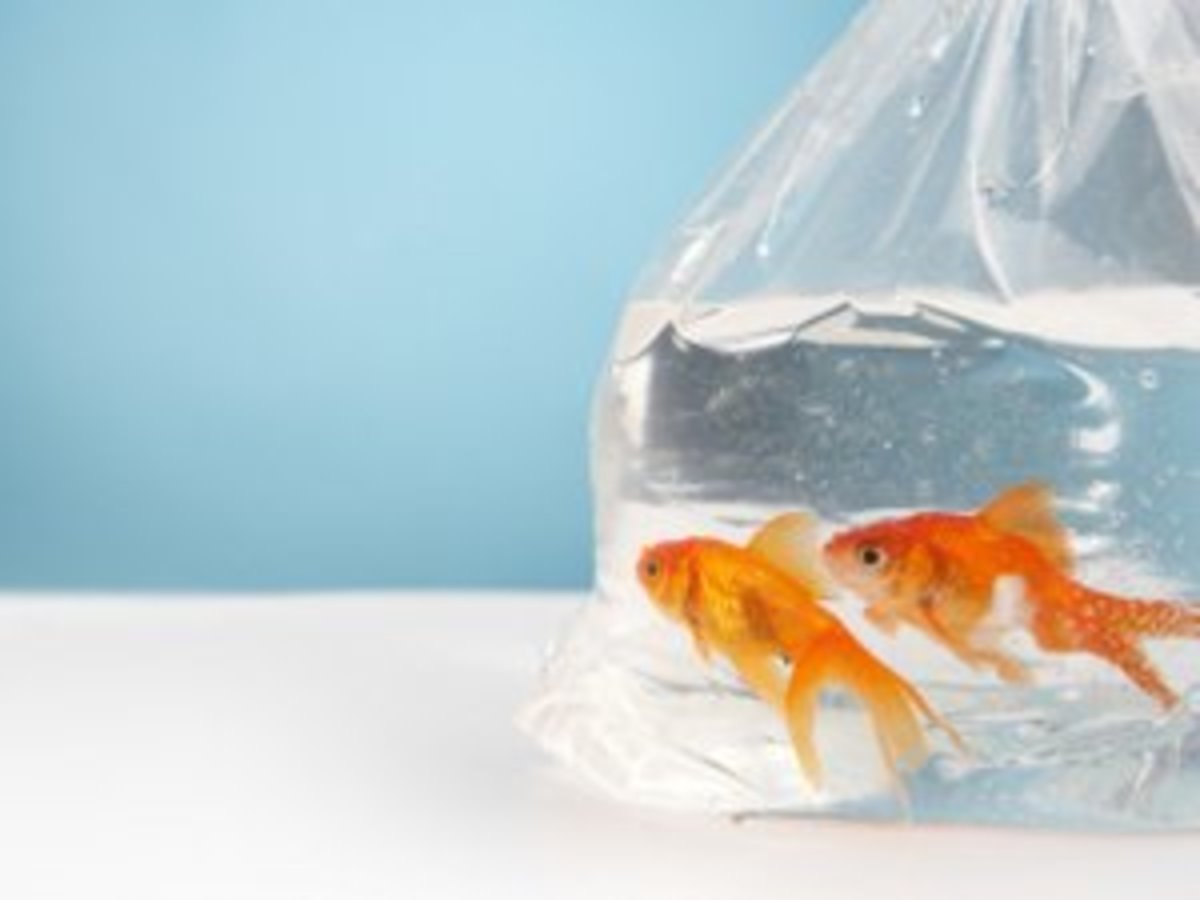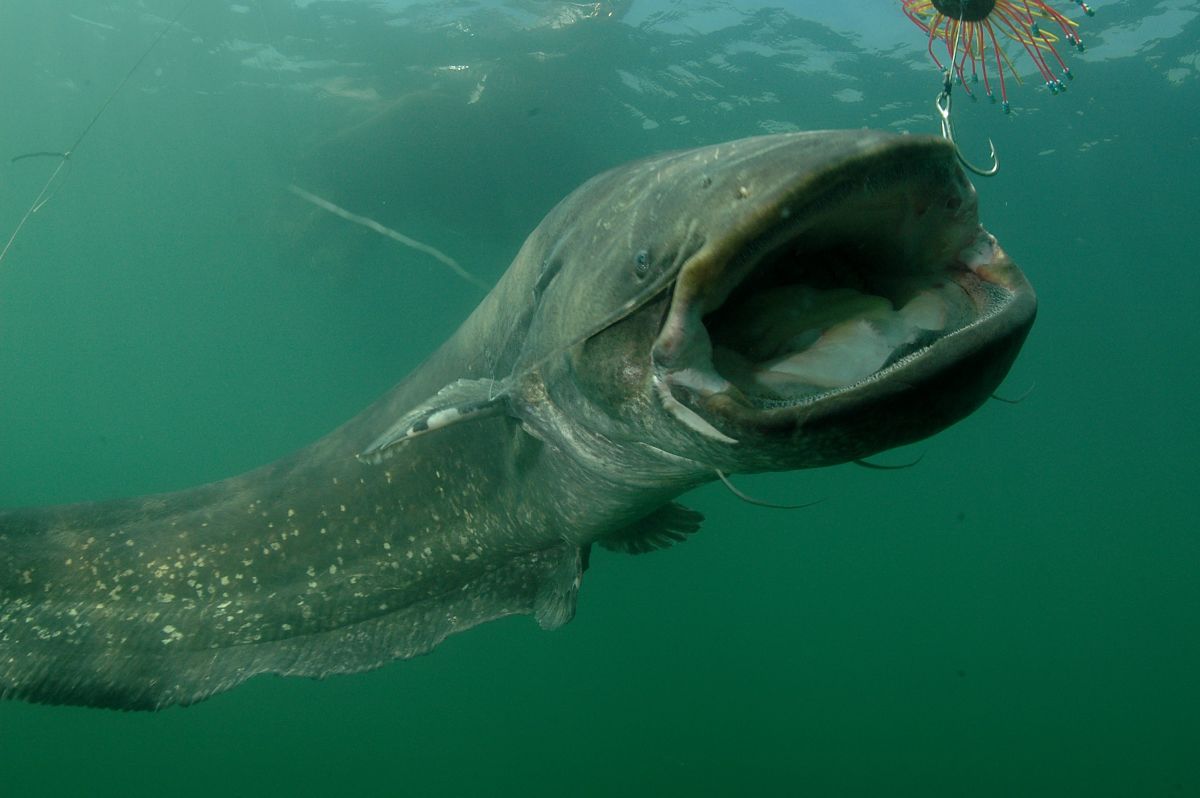Planted Aquarium Filters and Accessories

Planted Aquarium Filters and Accessories
by Richard Brown
The filter on a fish tank is a critical piece of equipment. They help to keep the water clear and minimize the amount of toxic chemicals enter your aquariums water. A filters main job is to help convert ammonia into nitrate, called the nitrogen cycle. It does this by being a breeding ground for beneficial types of bacteria. A protein skimmer can be used to help supplement filter action. There are many ways to filter the water in an aquarium, but canisters and hang on backs (HOBs) are the most common. Not all filters are created equal. In tank filters take up aquarium space and are hard to conceal. Under gravel filters are outdated, ineffective, and can reduce plant growth. Using an effective filter will help plants grow, reduce stress on animals, and save you a lot of head ache.
Your filter should have three types of media. A mechanical media lets water pass through, but blocks debri. This is often a sponge or a layer of polyester wool (filter floss). The water will then pass through Carbon. Activated Carbon has a self life of years, until it comes in contact with moisture. When Activated Carbon becomes wet it has a self life of a couple months at most. The Activated Carbon reacts with chemicals in the water rendering them inert. When fertilizing, detoxifying, or medicating your aquarium the Carbon media should be removed. Carbon is indiscriminate; it will react with the beneficial chemicals and the unwanted chemicals alike. The water should then pass through a bio media. This is usually ceramic or plastic pellets. These pellets serve as an ideal breading ground for beneficial bacteria that support the Nitrogen Cycle.
Orinoco Peacock Bass
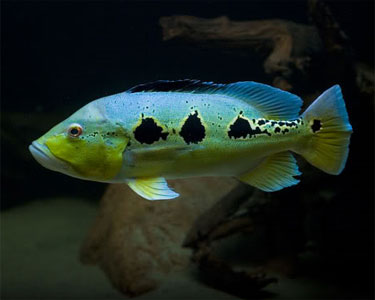
Nitrogen Cycle
An established, healthy, and consistent nitrogen cycle is essential for a happy fish tank. Fish waste and decaying organic matter, like dead plant leaves, cause ammonia levels to rise. Ammonia is a highly toxic substance. Certain species of Bacteria will feed on the Ammonia, and convert it into Nitrite(NO2). Nitrite is still very toxic, but not as toxic as Ammonia. Another group of bacteria species will eat Nitrite and convert it into Nitrate(NO3). Nitrate is the least toxic. Excessive Nitrates are the main purpose of doing weekly water changes.
Nitrate is plant food, but as levels rise more algae will flourish. Plants have adapted to out compete algae for food. Plants will flourish at low Nitrate levels, while algae will have difficulty. As Nitrate levels rise, algae will not have to compete with your plants to thrive. You will have an algae bloom. Plants have a resistance to algae growing on them. These algae blooms will over come your plants defenses. The algae will coat your plants, starving them of light. With out light your plants can not conduct photosynthesis, and will die. Different plants have stronger and weaker defenses against algae. Typically cheap plants have stronger resistances, because this resistance makes them easy to grow and propagate.

Hang on the back filters (HOBs)
Hang on the back filters (HOBs) are the most common type of filter used with fresh water aquariums. These filters are attached to the back, or side of aquariums. It a good idea to overrate your aquariums filter. There is no such thing as over filtering,150% is reasonable. Get a quality filter that is rated at 1 and a half times the gallon capacity of your tank. Even though you can't over filter, you can create to much water current. Flow rates can be over done, but shouldn't be much of an issue at 150% to 200%.
AquaClear patented a very simple and the most effective HOB design. AquaClear is the only company that can use this design. Other companies design HOB filters very similarly, but cannot use AquaClear's highly effective and simple design. AquaClear filters are middle of the road priced and are the best by far; it's a simple truth.
If you choose to look for other HOB's, I will help you know what to look for.
A filter should circulate all water through the filter medium. A lot of HOBs do not circulate all the water that they pump through the filter media. If even a small gab is present water will rush through that instead of the filter media. Another common design flaw, is that the filter allows water to run over the top of the media.
Look for a filter with the most media, this is the stuff that does the filtering. You want more stuff that is physically there to filter the water. The more media that is there the better the filter will work. The Nitrogen Cycle bacteria will have more area to grow. Larger amounts of carbon will react with more of the trace chemicals that can harm fish and plants. More mechanical media means that less of the debri runs past it, and on to the other media of your filter. It is the mechanical media's job to keep the other medias clean.
The mechanical, carbon, and bio medias should be independent of each other. The carbon will need to be replaced regularly. If you must replace the bio media and mechanical media every time, your nitrogen cycle will crash. Being able to replace the carbon media and then rinse the rest (in cold water) will keep water conditions stable inside your tank.
You should be able to regulate the water flow rate. Plants like lower flow rates, the lower flow rate should not compromise water quality. If you find a filter with adjustable flow rate make sure that it reduces flow by recirculating water inside of it, instead of just slowing down the pump.
Make sure that the filter is easy to maintain, the more complex a filter is the more difficult is to maintain. The impeller, much like a propeller, is what drives water in a filter. Impellers sometimes get stuck, causing your filter to stop working. Make sure that the impeller is easy to access. If the design is simple, when the impeller inevitably gets stuck, it is easily fixed.
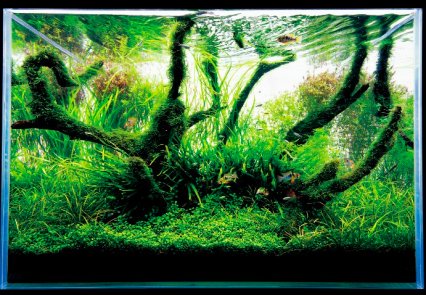
Canister filters
Canister filters are superior to HOBs. They have more medium, lower flow speed, higher flow volume, the tubes are easy to conceal, the tubes can be arranged to provide the best water circulation, and many are oxygenated. The use of a canister filter permits the use of an algae sterilizer. Canister filters are the best filter you can have, but they are pricey.
A canister filter is not attached to your tank. This allows it to have more medium and provide better water circulation.
The speed that water flows through the filter is almost always adjustable. This mean that the water current can be changed to fit your needs.
The hose coming from your tank and the hose going back to your tank are larger in diameter. This allows the filter push higher volumes at lower speed. The high volume-low speed helps to make the current in your tank more evenly distributed. HOBs create small areas with high speed current and large areas with very little current.
The hoses leading to and from the filter can be placed were ever you want them in your tank. The hoses are easily concealed because you can choose were to place each one. By placing the inlet hose at the bottom of ones side, and the outlet hose at the top of the other will remove dead spots with very little current.
Canister filters are often oxygenated with their own aeration system. By creating a high oxygen environment inside the filter, the colonies of beneficial bacteria can thrive. This makes the same amount of bio media much more effective at supporting the nitrogen cycle. The water flowing out of the filter is highly oxygenated this helps to keep you fish healthier.
The hose leading back to the aquarium makes the use of an algae sterilizer possible. Algae sterilizers are a UV light that kills algae. The algae that is killed can't go on to reproduce inside your aquarium. An algae sterilizer lowers the amount of algae in your tank. This will allow the plants to grow better. Algae will have a harder time achieving the population it needs to over come your plants natural defenses.

protien skimmer
Protein Skimmer
A protein skimmer is an effective way to reduce Nitrates. Protein skimmers remove organic waste before it completely decays. An air pump, pumps air through an air stone at the bottom of a tube. The tube is positioned vertically and has holes in it to allow aquarium water to flow through it. The bubbles create a foam, trapping decaying organic matter (fish poop). At the top of the tube is a collection cup that the foam rises into. The collection cup can be emptied, preventing a lot of ammonia from every forming in your aquarium. Protein skimmers are a very common piece of equipment in coral reef aquariums. Water changes in coral aquariums are more difficult and time consuming, then with fresh water tanks. Planted tanks also need low nitrate levels. Protein skimmers can be used to help reduce Nitrate levels between water changes.
What not to use
I do not recommend in tank filters. In tank filters take up aquarium space, and are hard to hide. Having man made objects visible inside an aquarium breaks the illusion of a fish world. In tank filters are not very pretty any way. In tank filters are subject to the same patent laws as HOBs, and AquaClear doesn't make them. This means that they have an inherently compromised design, both by their nature and patent law.
Under gravel filters don't work very well. They use the substrate to filter the water. Instead of cleaning filter medias, you will have to rinse the entire substrate regularly. The dreaded Carbonic Acid (H2CO3) can form if the substrate is not cleaned. The decaying organic matter is trapped in the substrate. Bacteria feeding on it will release Carbon Dioxide CO2. The CO2 will turn into bubbles. When these bubbles are trapped, the CO2 may turn into H2CO3. Under gravel filters also pull away fertilizers from the roots of your plants.
Refugiums are commonly used with marine Aquariums. Refugiums act like a planted tank to help filter out Nitrates. They usually have a canister filter leading into them, a protein skimmer inside, and an algae sterilizer. There isn't much point in using a refugium to filter a planted tank. A planted tank is a fresh water refugium.
- planted aquarium substrate
'Substrate is the foundation of a thriving planted aquarium.' sand, rocks, gravel, aquarium planting medium, retaining walls, varied depth, planted tank, fish tank, aquatic plants, - The Basics of a Planted Aquarium
"Planted aquariums are living works of art." beginners guide to planted aquarium setup, setup, aquarium, substrate, water, filter, heating, cooling, light, hardscape, aeration, CO2, and more...



